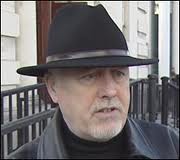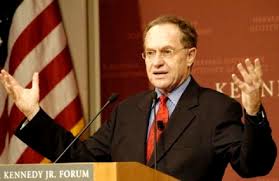Followers of Danny Morrison’s Twitter feed received the message below on January 16th and those of them who are his fans were probably delighted to read it. Here it is:
 Life being too short as it is I am not on Danny’s Twitter list so I am grateful to a friend for alerting me to this message and sending me a copy.
Life being too short as it is I am not on Danny’s Twitter list so I am grateful to a friend for alerting me to this message and sending me a copy.
Danny was excited over a review in the Irish Times of a recently published academic tome examining the relations between the East German intelligence service, the Stasi and Ireland between the foundation of the GDR in 1949 and the fall of the Berlin Wall in 1990. The book, published by Manchester University Press, was written by Jerome aan de Wiel and retails for an eye-watering £63.
The book is based on an examination of some 6,000 documents – what Mr aan de Wiel terms ‘surviving’ documents – retrieved from the Stasi’s files in East Berlin.
The reviewer, one Derek Scally, had this to write inter alia, much to Danny’s glee:
But what of the shadowy contacts between Belfast and East Berlin that pop up in many standard works on the Troubles? According to aan de Wiel, many of these works, such as Ed Moloney’s history of the IRA, make claims that are not backed up with evidence.
The comment angered me, needless to say, but it was also puzzling. As the friend who alerted me to the Morrison comment pointed out I never made any connections at all between the IRA and the Stasi in ‘A Secret History of the IRA’ (not ‘a history of the IRA’ as Scally called it).
I wrote to the publisher to complain and received back a very polite email containing a copy of a message the author had sent to the publisher in response to my complaint. It began, tellingly:
I have never said anything about Ed Moloney, and in fact was very careful about what I wrote.
And he quoted the relevant passage from his book:
In his impressive history of the IRA, Ed Moloney writes that PIRA (Provisional IRA) member Brian Keenan was said to have contacts with the East bloc, especially with the Stasi, but that concrete evidence to support this is not forthcoming. Keenan was often described as the tough Marxist within the IRA. As Moloney points out it was in fact the OIRA (Official IRA) that got support from the Soviet Union and the East bloc.
It is in fact the supposed links between the Stasi and the Officials which Mr aan de Wiel says is not supported by those ‘surviving’ Stasi papers; nothing to do with the Provisionals at all. But in his eagerness to take a swipe at myself the bold Danny either didn’t check or didn’t care. I suspect the latter.
Even so, Mr aan de Wiel adds an important qualification:
An important point must be emphasised though. This is not to say that it is absolutely certain that the Stasi did not do it, (i.e. supply the Officials with guns etc) but based on the evidence of the surviving written material it simply cannot be proved.
I would add my own qualification, based on my knowledge of said Officials, and that is to explore further the meaning of the word ‘surviving’ as in ‘surviving documents’.
Or, to put it another way, I would dearly like to get a glimpse at the airline manifests of incoming passengers at the airports in Berlin in the days immediately following the fall of the Wall, especially those whose airport of origin was either Dublin or Belfast and whose addresses were either in Gardner Place or the lower Falls Road, especially Cyprus Street.
Manchester University Press’ helpful commissioning editor, Tony Mason had this to say in his email to me:
From what Jerome has said below and from my reading of the relevant passages, this strikes me as incorrect quoting from the book by Derek Scally in his review in The Irish Times rather than anything wrong that Jerome has said. We may ask Jerome to ask The Irish Times to print a correction to this.
I don’t know if Mr aan de Wiel asked for a correction, but I did. Here it is:














 A drawing by Irish Times Cartoonist Martyn Turner in response to Wednesday’s attack on Charlie Hebdo.
A drawing by Irish Times Cartoonist Martyn Turner in response to Wednesday’s attack on Charlie Hebdo.






You must be logged in to post a comment.